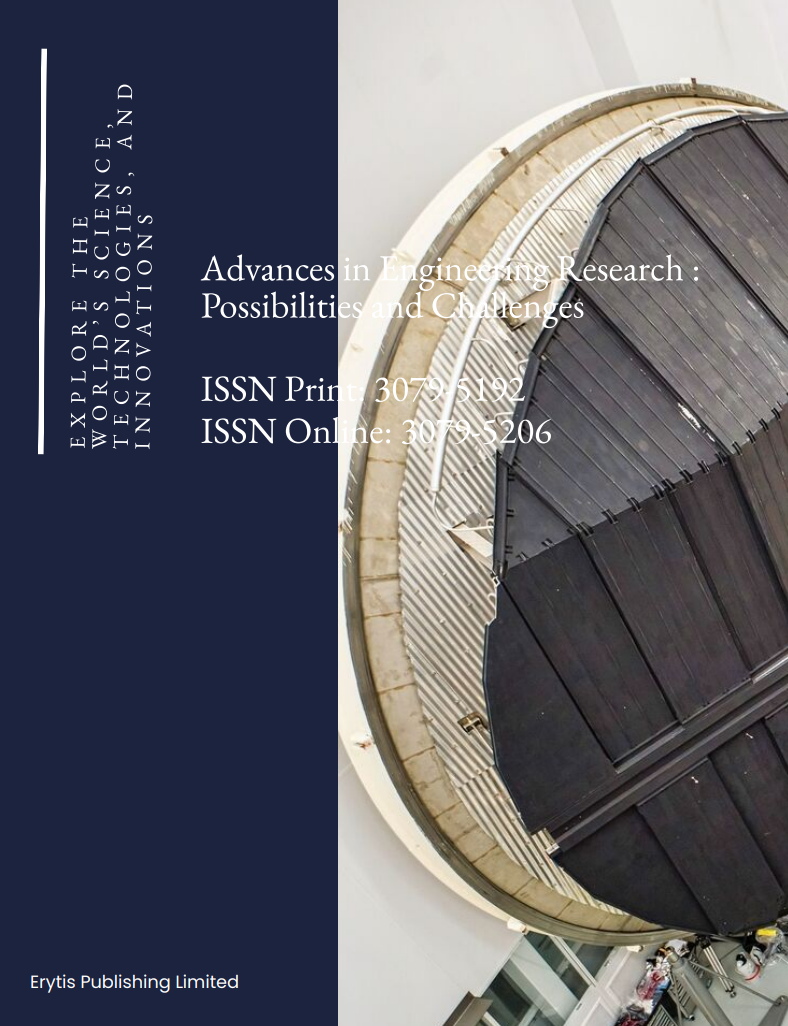Data-Driven Inverse Design of THz Metamaterials: A Deep Learning Approach for Small-Data Regimes
DOI:
https://doi.org/10.63313/AERpc.9057Keywords:
Inverse Design, Terahertz Metamaterials, Deep LearningAbstract
Inverse design based on deep learning offers a revolutionary paradigm for ac-celerating the development of novel terahertz (THz) metamaterials. However, its application is often constrained by the high cost of acquiring large-scale sim-ulation datasets. This work focuses on the high-accuracy inverse design of THz electromagnetically induced transparency (EIT) metamaterials under small da-taset conditions, systematically evaluating the effectiveness of different deep learning architectures.
To achieve precise inversion from a target spectrum to its physical structure, we constructed a representative dataset through parametric electromagnetic simu-lation. On this foundation, we built, trained, and compared three neural network models: a Multi-Layer Perceptron (MLP) as the baseline, a residual fully con-nected network (FC-ResNet) for enhanced deep network training, and a one-dimensional convolutional neural network (1D-CNN) designed for sequen-tial data.
The results reveal a key finding: for this inverse design task, the FC-ResNet demonstrated superior predictive performance, achieving a coefficient of de-termination (R²) of 0.9794 on an independent test set. This significantly out-performed the baseline MLP (0.9438) and surprisingly surpassed the theoreti-cally more suitable 1D-CNN. Further analysis suggests that for the EIT inverse problem investigated here, the prediction relies more on the global morphology and correlation features of the spectrum than on localized characteristics. The FC-ResNet, with its deep architecture and effective residual learning mecha-nism, successfully captured this complex, non-local mapping relationship. The core contribution of this work is demonstrating that for complex physical prob-lems, a deep, general-purpose model with sufficient expressive power and stable trainability can outperform a more specialized architecture that is prone to in-formation loss. This finding provides a crucial guideline for model selection in the intelligent design of physical devices, particularly in resource-constrained scenarios
References
[1] Tonouchi, Masayoshi. "Cutting-edge terahertz technology." Nature photonics 1.2 (2007): 97-105.
[2] Ferguson, Bradley, and **-Cheng Zhang. "Materials for terahertz science and technology." Nature materials 1.1 (2002): 26-33.
[3] Chen, Hou-Tong, Antoinette J. Taylor, and Nanfang Yu. "A review of metasurfaces: physics and applications." Reports on progress in physics 79.7 (2016): 076401.
[4] Smith, David R., John B. Pendry, and Mike CK Wiltshire. "Metamaterials and negative re-fractive index." science 305.5685 (2004): 788-792.
[5] Zhang, Shuang, et al. "Plasmon-induced transparency in metamaterials." Physical review letters 101.4 (2008): 047401.
[6] Chiam, Sher-Yi, et al. "Analogue of electromagnetically induced transparency in a terahertz metamaterial." Physical Review B—Condensed Matter and Materials Physics 80.15 (2009): 153103.
[7] Singh, Ranjan, et al. "Coupling between a dark and a bright eigenmode in a terahertz met-amaterial." Physical Review B—Condensed Matter and Materials Physics 79.8 (2009): 085111.
[8] Liu, Na, et al. "Planar metamaterial analogue of electromagnetically induced transparency for plasmonic sensing." Nano letters 10.4 (2010): 1103-1107.
[9] Molesky, Sean, et al. "Inverse design in nanophotonics." Nature Photonics 12.11 (2018): 659-670.
[10] Ma, Wei, et al. "Deep learning for the design of photonic structures." Nature photonics 15.2 (2021): 77-90.
[11] Peurifoy, John, et al. "Nanophotonic particle simulation and inverse design using artificial neural networks." Science advances 4.6 (2018): eaar4206.
[12] Liu, D., Tan, Y., Khoram, E., & Yu, Z. Training deep neural networks for the inverse design of nanophotonic structures. Acs Photonics, 5(4), 1365-1369.
[13] Nadell, Christian C., et al. "Deep learning for accelerated all-dielectric metasurface design." Optics express 27.20 (2019): 27523-27535.
[14] Jiang, Jiaqi, et al. "Free-form diffractive metagrating design based on generative adversarial networks." ACS nano 13.8 (2019): 8872-8878.
[15] Pestourie, Raphaël, et al. "Active learning of deep surrogates for PDEs: application to metasurface design." npj Computational Materials 6.1 (2020): 164.
[16] Liu, Zhaocheng, et al. "Generative model for the inverse design of metasurfaces." Nano let-ters 18.10 (2018): 6570-6576.
[17] Ma, Wei, et al. "Probabilistic representation and inverse design of metamaterials based on a deep generative model with semi‐supervised learning strategy." Advanced Materials 31.35 (2019): 1901111.
[18] Asano, Takashi, and Susumu Noda. "Optimization of photonic crystal nanocavities based on deep learning." Optics express 26.25 (2018): 32704-32717.
[19] LeCun, Yann, et al. "Gradient-based learning applied to document recognition." Proceed-ings of the IEEE 86.11 (2002): 2278-2324.
[20] He, Kaiming, et al. "Deep residual learning for image recognition." Proceedings of the IEEE conference on computer vision and pattern recognition. 2016.
Downloads
Published
Issue
Section
License
Copyright (c) 2025 by author(s) and Erytis Publishing Limited.

This work is licensed under a Creative Commons Attribution 4.0 International License.















